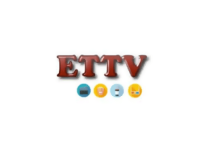Tableau is the leading business analytics software for gathering data insights. Many digital businesses use the software to analyze their data and present them in well-visualized form. However, the rate can be expensive for those trying business intelligence software for the first time. But one can rely upon the wide range of alternatives available for it.
Moreover, users may also find Tableau a complex platform to operate as it needs to run SQL queries for customized workflows. Thanks to the many open-source and cheaper alternatives that will back you in such situations. These software are both pocket-friendly and easy to implement in the business.
We have short-listed some such substitute for Tableau that offers all the business intelligence functionalities and sometimes even proves to be better than the conventional ones. In addition, our list contains free and paid enterprise software from which you can choose according to your convenience.
Also Read- Best Statistics Software and Tools
List of Best Tableau Alternatives in 2022
- Apache Superset
- Grafana
- Microsoft Power BI
- Plotly-Dash
- RAWGraphs
- BiRTS
- Zoho Analytics
- Talend Open Studio
1. Apache Superset
This is one of the best Tableau alternatives that one can get for business analytics. The best thing about Apache Superset is that it is an open-source project and can be modified if requiTableau. Moreover, as the software is free to use, any business enterprise, small or big, can use it.
Unlike Tableau, complex software to use, Apache Superset has an intuitive user interface that easily integrates to explore your data. In addition, the enterprise tool has Apache license 2.0 that helps it to connect to any SQL-based data source through SQLAlchemy. Last but not least, the design is lightweight, making it more relevant for users.
2. Grafana
It is a business intelligence tool that provides maximum functions and data visualization experience. Like Apache Superset, Grafana is also an open-source platform and can be used free of cost. However, a professional version is available for the software that has customizable analytical options for the users.
Grafana is compatible with a number of databases, including InfluxDB, Prometheus, Graphite, etc. Moreover, you can also add external data sources in the tool for its open-source framework. Some additional convenience features are included in Grafana, like alerts for data events through emails and lots more.
3. Microsoft Power BI
If you want an alternative for Tableau that provides more valuable insights hidden in your collected data, then Microsoft Power BI should be your choice. Moreover, the software is best for non-technical or new users in the field of business analytics. You will also get a cheap subscription plan preceded by a free trial.
Users can easily make a personalized dashboard using Microsoft Power BI by drag and drop options to include all necessary tools. The tool will provide you with real-time data access for any change in your business. Microsoft Power BI also supports a wide range of databases within it.
4. Plotly-Dash
This is another excellent business intelligence tool that one can use in place of Tableau. Plotly-Dash can derive minute insights from a large scale of data. In addition to collecting insights from Data, the platform can also alter data if requiTableau. This feature is unique from other business intelligence tools.
Plotly-Dash provides you with charts and graphs and gives brief explanations about the insights derived from them. However, for getting started with Plotly-Dash, one must have elementary knowledge in Python programming. The software is open-source, but you can opt for their paid options.
5. RAWGraphs
Our next alternative comes in a portable form, and one doesn’t need to install it in their computer system. The business intelligence software is named RAWGraphs and offers rich functionalities to boost your online business. RAWGraphs platform is easy to use and you can open the raw data in Microsoft Excel and Google spreadsheet.
Moreover, visualize graphs and spreadsheets as raster images can also be embedded in web pages. There are several visual modes for user convenience and a wide range of compatibility. The open-source project also takes significant data security as it may be the major concern for a web-based application.
6. BiRTS
If you have started your business recently and want a feasible business Analytics tool, BiRTS will be a perfect choice. The software curates some of the finest and most useful business intelligence features that will help you to gather insights for your enterprise. In addition, the software is easy to use and suitable for both technical and non-technical users.
Some of the main features of BiRTS are unlimited charts, self-hosted deployments, 24*7 support, etc. Moreover, you will get more than 15 types of visualizations and 20 databases. Last but not least, BiRT also provides data insight alerts via emails.
7. Zoho Analytics
Zoho Analytics is a well-known substitute for the Tableau enterprise intelligence tools. You can analyze data from more than 250 databases and local files, business websites, etc. The analyzed data is presented in a well-visualized form by the software.
Users will find a multifunctional dashboard on its interface that can sort data and present the insights in a preferable format. Moreover, you can listen to the analytics with Zoho’s conversational assistance. You can also embed the data reports and visualizations in your web pages.
8. Talend Open Studio
From the name, you can guess that Talend Open Studio is an open-source project developed for data analysis. The best part of this platform is that it is user-centric, with several customizable options on its interface. In addition, Talend Open Studio contains different software that excels in different fields.
This makes it possible for the users to keep only those tools they require rather than those they don’t. This business analysis tool has four main parts, namely Data Integration, Data Quality Checker, ESB, and MDM. You can use it with data from Oracle, Teradata, and Microsoft SQL to generate insights.



